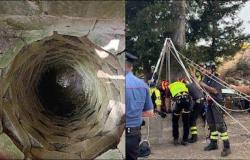Given the enormous interest it has aroused, today I want to talk to you, my reader friend, my equal friend, about the general Italian situation regarding this “small silent revolution”, in which many, including myself, place so much faith.
In the meantime, let’s take a necessary step back and try to understand what I’m referring to.
In 2010, the Barolo production area, after twenty years of mapping (with the contribution of food and wine journalist Alessandro Masnaghetti, a true Italian point of reference in the sector, being fundamental), introduced the so-called MGA, “additional geographical mentions”, which obviously attracted the attention of industry insiders and institutions, if only for the enormous importance that Barolo has in the world of Italian wine.
And so, this attention led in 2016 to the introduction and official regulation of MGA in the Consolidated Wine Text (later revised in 2020).
The first thing to say is that the MGAs were officially called UGA (Additional Geographic Units), leaving the option for those who had moved before 2016 to continue calling them MGA.
But, aside from this small difference, you are probably wondering what these phantom mentions or additional geographical units are.
According to the aforementioned Testo Unico del Vino, the MGA, or perhaps it would be better to say the UGA (have I already said that I much prefer the first definition?), are precisely geographical mentions that can be added to the label if all the grapes used to produce that particular bottle come from it.
More specifically, MGAs are essentially smaller areas of some denominations (for example municipalities, hamlets, administrative zones or micro-geographical areas well defined and delimited) reported in a specific listintegral part of the production specification of the reference DOC, which can be indicated on the label if, in fact, the wine present is obtained with all grapes coming from that specific MGA.
And, what is even more fundamental, and what differentiates them substantially from the French Crusle MGA non they have no classification of importance and do not foresee no specific rule or more restrictive compared to the production specifications.
Translated into hard cash, this means that to produce a Barolo generic, a Barolo Ginestra (MGA of Monforte) or a Barolo Lazzarito (MGA di Serralunga) the exact same rules were followed. And, above all, there is no indication that Ginestra is more or less good than Lazzarito or generic Barolo. This last question is left exclusively to personal taste.
You are probably wondering what the point is of indicating an MGA on the label, if this information is not synonymous with more or less quality.
Legitimate question, which I will try to answer.
First of all, the usefulness of an MGA is to to point out and underlinewith great precision, the origin of a wine, especially, but not only, in very large production areas (think of the various territorial denominations such as Colli Piacentini DOC, Trentino DOC, etc.).
But the most important aspect is that, if we look beyond the Alps, there is no doubt that being able to communicate to the consumer the specific origin of a wine, compared to a more generic specification, has led some of these wines to be considered of higher quality, and thus to command prices that are even much higher than more generic wines, if only because of the scarcity of production.






